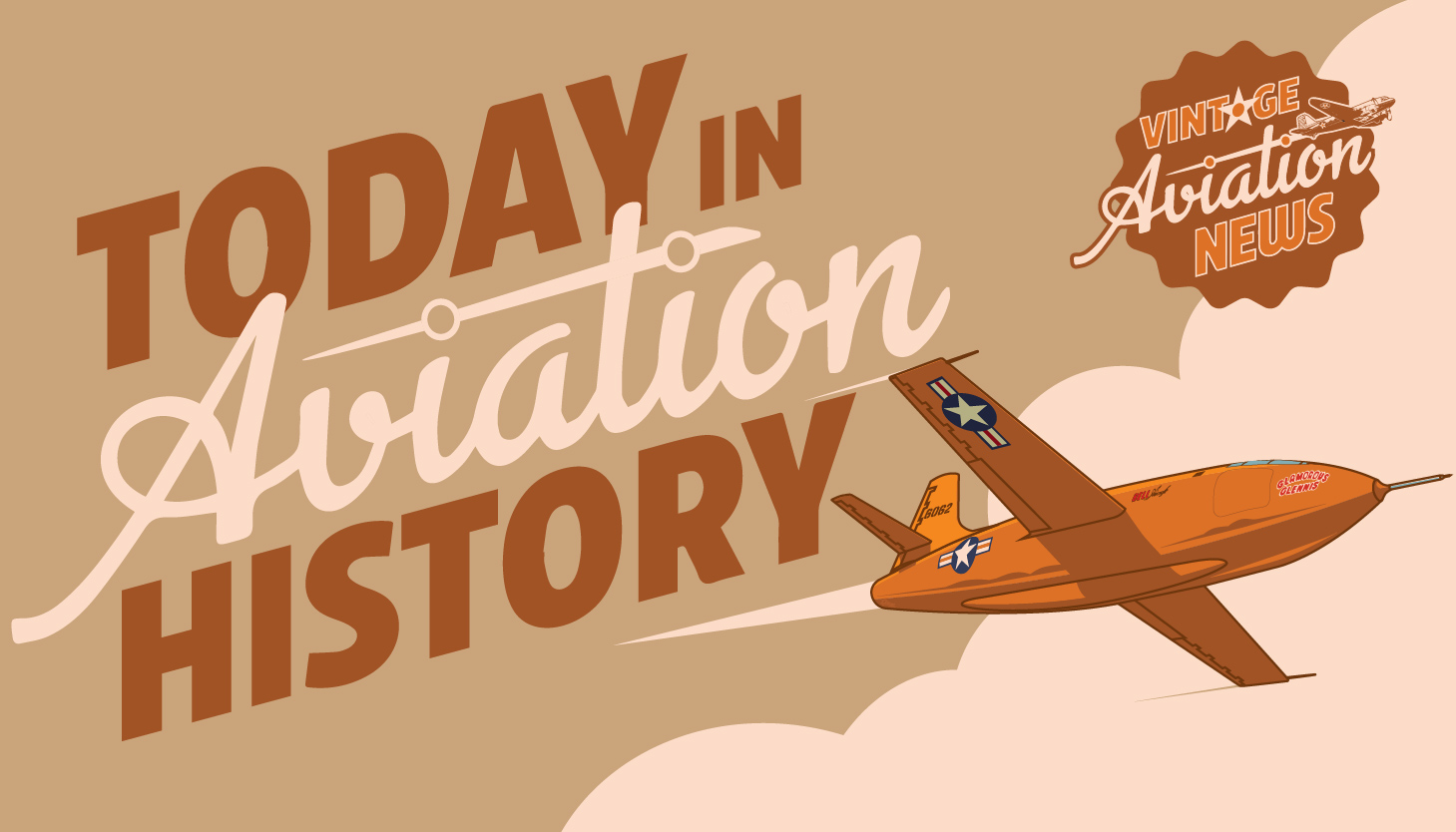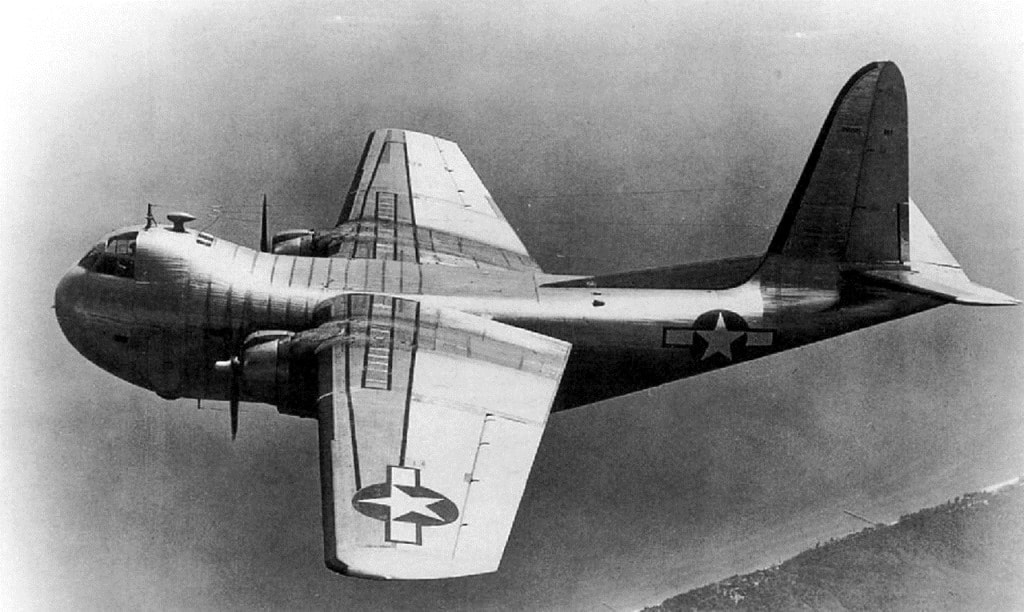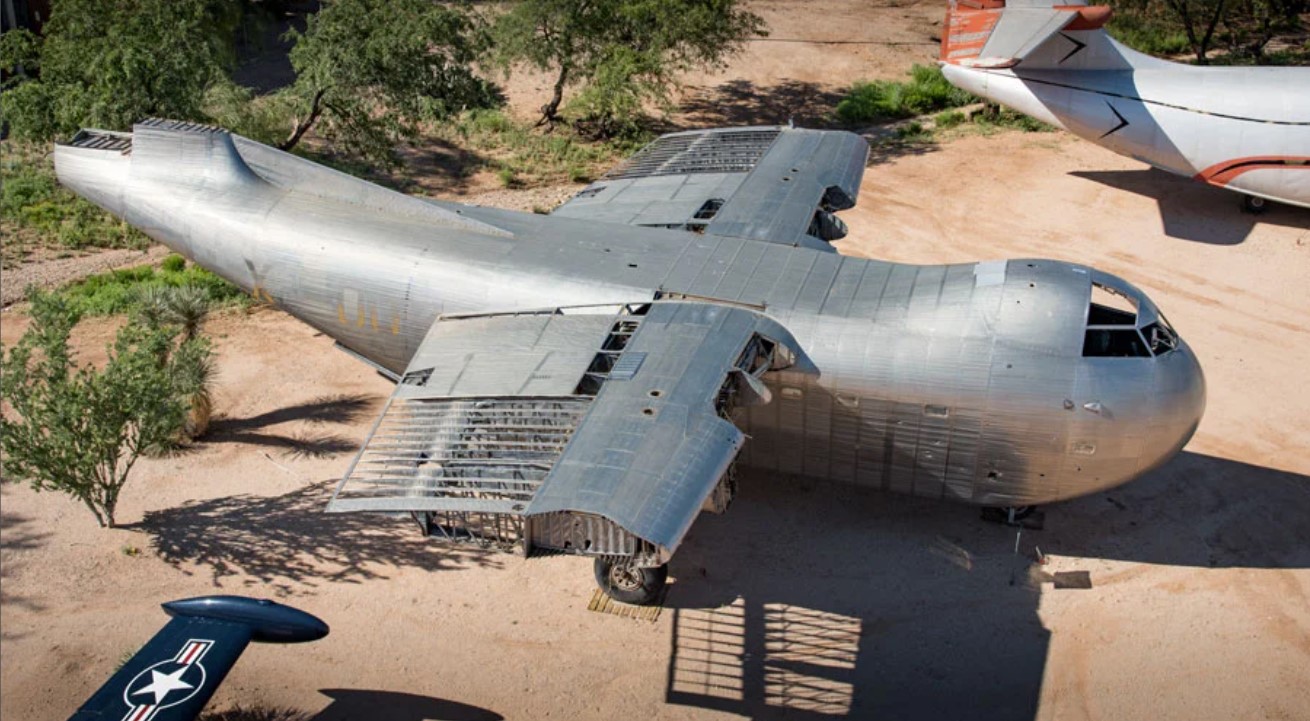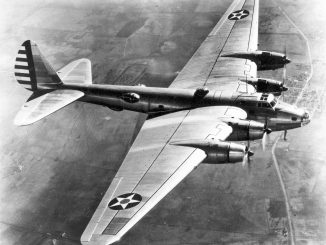

On October 31, 1943, the Budd RB-1 Conestoga took its first flight, achieving a remarkable milestone in aircraft design by being one of the first cargo aircraft to be made of stainless steel. The aircraft was developed during World War II for the U.S. Navy but never saw combat. However, it did inspire future American cargo aircraft, including the modern military cargo airlifters.
World War II raised several concerns regarding the availability of resources. One such concern was the availability of aluminum and other huge quantities of materials needed for the war, including aircraft manufacturing. This became a pressing issue as the war brought up a clear need for transport. Hence, the limitation in manufacturing capacity was leading to major issues. The war needed a miracle, a new idea.
The Miracle
In such dire times, the U.S. needed a spark of innovation, which indeed was ignited as the Budd Manufacturing Company of Philadelphia stepped up to take the task. The Budd Company came up with the revolutionary idea of using stainless steel rather than aluminum, saving on resources and cost per unit weight. This wasn’t their first attempt on a stainless-steel venture, but it was definitely a first for the military. The Budd Company had experience working with stainless steel as they had produced 10,000 railroad cars using the material and also developed the shot weld manufacturing technique in 1932, which Edward G. Budd patented. However, their experience fell short in aircraft design as they had only worked with stainless steel aircraft once before with their Budd BB1 Pioneer in 1932.
The idea of utilizing stainless steel in aircraft design was fairly new at the time, especially because of the extra weight it had over aluminum. The use of this material was indeed a skeptical thought, but as the war raised a potential shortage of aluminum, Budd’s expertise with the material gave the military hope. The U.S. Navy finally placed an order for 200 of the new stainless-steel aircraft in August 1942, later followed by another order of 600 aircraft by the U.S. Army Air Force. The designation for both orders differed from the Navy designation of RB-1 and the Army designation of C-93.

Man of Steel
The manufacturing and production of the Budd RB-1 Contestoga began, and the final outcome was a twin-engine, high-wing, stainless steel cargo aircraft with a tricycle landing gear and monoplane design. It had a distinctive elevated fight deck, which gave it an almost hemispherical nose section and an unobstructed cargo area for its entire length (2.44 x 2.44 meters). The deck could accommodate three crew members (a pilot, a copilot, and a navigator), and would accommodate 24 paratroopers or 24 stretchers and 16 sitting wounded. The RB-1 featured a 1,200 hp Pratt & Whitney R-1830-92 air-cooled 14-cylinder, twin row radial engines. These 24-volt electrically powered engines drove the three-bladed Hamilton Standard Hydromatic constant-speed, full-feathering propellers. The fuselage was made of thin-gauge stainless steel, and only a portion of the wing was made of metal with a trailing edge and control surface covered with fabric.
First Flight & the Aftermath
The prototype of the RB-1 took its first flight on October 31, 1943, from Budd Red Lion Factory Airfield with pilot Guy Miller and had a takeoff run of 280 meters. The aircraft was then delivered to the U.S. Navy as ordered in March 1944 and went under further testing. Unfortunately, the aircraft crashed during one such test; the test pilot was saved and credited the stainless-steel design for the save. The aircraft gave positive results after the test, including greater than-expected fuel consumption and a range of 700 miles (standard payload) and 650 miles (maximum payload).
Three prototypes were built, including the NX37097, NX41810, and NC45354; among these, one was used for testing radio equipment, while the other two went under flight test evaluations. The tests suggested that the flying controls of the RB-1 were relatively poor and that the use of stainless steel was no longer a feasible option for aircraft production. The cost overruns and production of stainless steel delayed the overall manufacturing process. As aluminum production rose again by late 1943, new facilities were inclining towards traditional cargo aircraft like the Douglas C-47 Skytrain. These setbacks resulted in the USAAF cancelling their order for C-93 and the U.S. Navy reduced the R.B.- 1 orders from 200 to 26, out of which only 17 were delivered in March 1944.
Miles in Between
The Budd RB Conestoga never entered into squadron service with the U.S. Navy due to safety concerns, as during production, six of the aircraft suffered accidents within just five months. However, on April 13, 1944, three of the aircraft were assigned to Naval Air Stations (NAS) as “hacks” or utility aircraft, where the NX37097 also suffered an accident, killing one of the crew. The Navy thus concluded that they did not want any Conestogas in their fleet, and in January 1945, the RB-1s were put on the disposal list for sale.
Later in 1945, the RB-1s were transferred to the War Assets Administration (WAA), which was tasked with selling war surplus equipment. The WAA sold 14 Budd RB’s to the Flying Tiger Liner in July of the same year, and the Conestogas became the first aircraft owned by Flying Tiger, which went on to become one of the world’s largest cargo airlines. However, the risky nature and record of the aircraft got it a bad reputation for engine fires and engine exhausts falling off in flight. Thus, a huge number was lost to accidents, and even Flying Tiger disposed of them after a short operational period of transporting cargo in Long Beach, California.

The Last one Standing
The Budd Conestoga RB-1 was a unique aircraft with a stainless-steel construction that proved to be remarkably innovative. Some wrecks were repurposed for various uses, and today, only one remaining airframe of this aircraft can be found at the Pima Air & Space Museum in Arizona. Though stripped to a hulk, its stainless-steel body continues to fascinate visitors, still holding up well after decades, a testament to the innovative design of this extraordinary plane.
Today in Aviation History is a series highlighting the achievements, innovations, and milestones that have shaped the skies. All the previous anniversaries are available HERE
Related Articles

Today in Aviation History: First flight, Sikorsky YUH-60A Black Hawk
Today in Aviation History: First flight of the Boeing XB-15
Today in Aviation History: First flight of the Curtiss P-40…
Today in Aviation History: First Flight of The Lockheed L-1049…
Today in History: First flight of the Sikorsky S-72
"Haritima Maurya, pen name, ""Another Stardust,"" has been passionate about writing since her school days and later began sharing her work online in 2019. She was drawn to writing because of her love for reading, being starstruck by the art of expression and how someone can make you see and feel things exclusive to their experience. She wanted to be able to do that herself and share her mind with world cause she believes while we co exist in this beautiful world least we can do is share our little worlds within.
As a commercial pilot, Haritima balances her passion for aviation with her love for storytelling. She believes that, much like flying, writing offers a perspective beyond the ordinary, offering a bridge between individual experiences and collective understanding.
Through her work, ""Another Stardust"" aims to capture the nuances of life, giving voice to moments that resonate universally. "






Be the first to comment
Graphic Design, Branding and Aviation Art